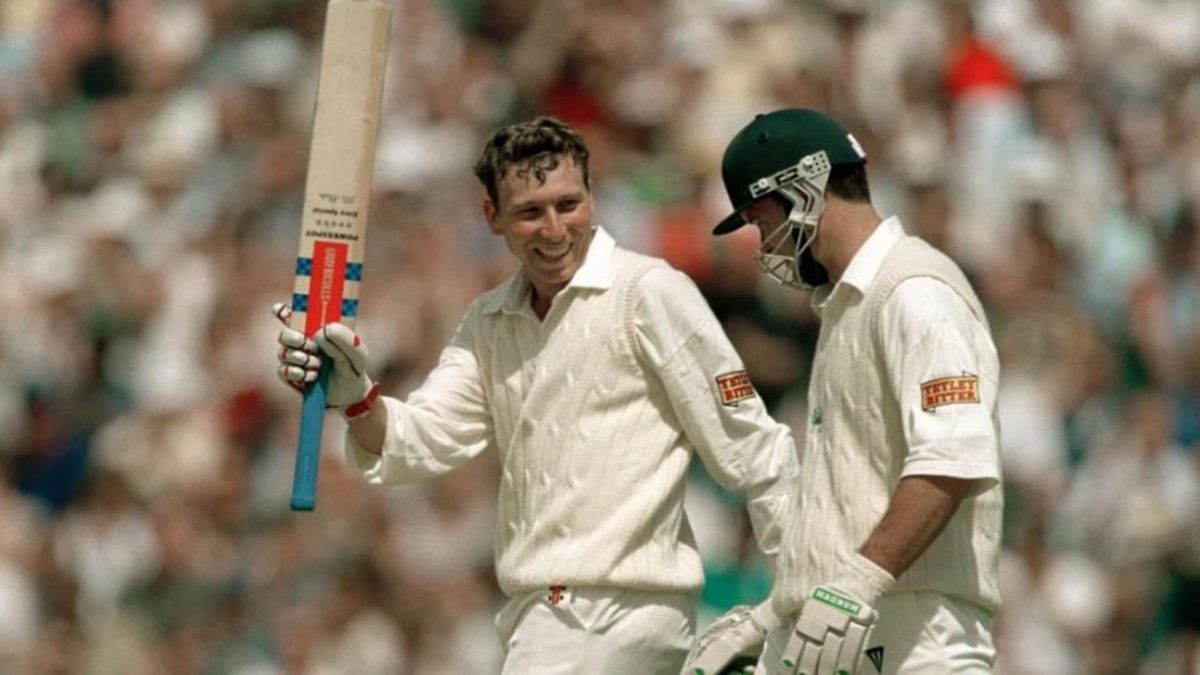
If a batsman finishes their Test career with an average of over 40, they have undoubtedly had a successful career.
On our social channels, we asked our readers to offer suggestions for the best batsmen in Test cricket to finish their careers with an average of under 40.
Maybe not the best, but @markbutcher72 was a far better player than his final average!
— Daniel Hurley (@Danielhurley100) May 4, 2020
Mark Butcher was a popular response. Butcher finished his 71-Test career with an average marginally under 35 but markedly improved in the second half of his international career. After 27 Tests, he averaged just 25.06 in Test cricket but that number climbed to 41 in his last four years as an international cricketer as he became a mainstay in the England middle-order.
Cheque’s in the post, Dan 👍
— mark butcher (@markbutcher72) May 4, 2020
Butcher was appreciative of responses mentioning his name.
Hick and Ramps both should have averaged in mid-40s at least – and would do today with reassurance of central contracts and more consistent selection.
— Tim Clarke (@TJClarke_) May 4, 2020
Graeme Hick and Mark Ramprakash, two players often labelled as “underachievers” in Test cricket were two other popular suggestions. Both batsmen dominated county cricket and ended their respective careers with over 200 first-class hundreds between them but neither managed to consistently replicate their success in the Test arena.
Both showed glimpses of their enormous talent, however. Ramprakash averaged over 40 in 12 Tests against Australia, a team that were the premier side in world cricket for most of his England career while Hick experienced a 30-Test spell in the mid-1990s where he was among the top run scorers in Test cricket, scoring 2,284 runs at 46.61 between the start of 1993 and the end of 1995.
It always amazes me that Lamb only averaged 36. Growing up I just remember him being a wonderful player of pace bowling. One of the few to do well against West Indies in 80s
— Tim Clarke (@TJClarke_) May 4, 2020
Allan Lamb, Mike Atherton and Alec Stewart were another trio of English players who featured prominently in readers’ suggestions.
Atherton had leadership responsibility, was the prized wicket for a decade, had chronic shoulder injuries and carried the team from number 1 with next to no help. Would have averaged over 40 in another era or team.
— martin elson (@minidigits) May 4, 2020
One reader on Facebook, Stephen Plant, argued that Stewart could have ended his career with a much higher average had he not kept wicket for as long as he did. “Alec Stewart,” wrote Plant. “Averaged 46 when not keeping. I think he might have got to 10,000 test runs if he’d have played as an opener all his career.”
Away from England, Carl Hooper, Nathan Astle and Marvan Atapattu were popular responses. Andrew Donnison commented: “Carl Hooper would be in the conversation. Supremely talented, yet only managed to finish with an average of 36.47.
[breakout id=”0”][/breakout]
“In fact, those that have scored over 5000 Test runs and at least 12 centuries would all have to be in consideration:
Alex Stewart (39.55, 15), Marvan Atapattu (39.02, 16), Brendon McCullum (38.64, 12), John Wright (37.83, 12), Mike Atherton (37.70, 16), Nasser Hussain (37.19, 14), Carl Hooper (36.47, 13) and Ian Botham (33.55, 14). An interesting one is Arjuna Ranatunga. 5,105 runs @ 35.70, but with just 4 centuries.
“Looking at these stats, and the fact that Stewart averaged 46.7 in his 51 Tests without the gloves suggests that he probably could’ve had a significantly better career if he was just allowed to concentrate on batting in one position.”
There was also the odd reply about current internationals, including this one from Ben Stokes.
https://twitter.com/benstokes38/status/1257363146991435776







